Hey, kids! Have no fear, mother’s here
Lactating animals have a decrease in fright-inducing hormone, tests show
By JILL MAHONEY
Monday, August 2, 2004
GLOBEANDMAIL.COM
Mama bears do it. So do mice, birds, sea otters and just about all other mothers in the animal kingdom. When their offspring are in danger, they act fiercely to protect them at all costs.
New research, which provides a glimpse into the female animal brain, suggests maternal aggression is a biological mechanism that is activated by lactation and caused by low levels of a fear-and-anxiety hormone.
"If you have a fight-or-flight situation, for most lactating females really flight is not an option. And that’s where we think actually the decrease of [the hormone] might push females more towards the fight than the flight," said Stephen Gammie, a zoology professor at the University of Wisconsin-Madison and lead author of the study.
The paper, which appears in the August issue of Behavioral Neuroscience, marks the first time scientists have examined the reason behind the change in the fear response in relation to maternal aggression.
Prof. Gammie and his colleagues concluded the behaviour is linked to low levels of corticotropin-releasing hormone, a neuropeptide, or sequence of amino acids, that acts on the brain to control fear and anxiety.
"What our study suggests is that you have to have a low fear/anxiety response in order to protect your offspring," he said in an interview.
The study focused on mice, but he said there is "a good chance" the situation is the same for other animals.
Prof. Gammie has collected anecdotes of maternal aggression he thinks can be explained by the findings. People have told him of being attacked by female sea otters, which are normally timid creatures, when they got between them and their pups. Others have been dive-bombed by usually skittish birds for getting too close to their young.
But animals do more than act aggressively against threats to their young. A famous example is Scarlett, a Brooklyn, N.Y., street cat whose body was badly burned as she went back again and again to rescue her five kittens from a burning building in 1996. Scarlett became a folk hero and was the subject of a book.
As well, the killdeer, a type of bird, draws intruders from its young by moving away from them and pretending to be injured. "It’s not attacking, but it’s kind of a selfless act to get the animal away," Prof. Gammie said.
Scientists do not know whether humans experience the same process, though he suspects they do because most parents, both women and men, would fearlessly do anything to save their children.
"Anecdotally as a parent, I can say if I feel like something is threatening my kid, I don't feel a fear response. I know what fear is. I’m ready to act. I’m ready to jump in front of a bus if I need to. But it’s certainly not a fear-based response and that’s what our study suggests, is that in fact it’s suppression of that fear response which plays a role in protecting offspring."
The behaviour makes sense from an evolutionary perspective, he said, in that it fits the definition of a trade-off. By putting herself at risk, the mother increases the viability of her young.
"It’s really adaptive. If you don't do it, you're going to lose your offspring," Prof. Gammie said.
In animals, maternal aggression is dependent on lactation, which along with pregnancy, has been shown to result in brain changes and reduced fear. When the females wean their offspring, or if the brood somehow gets lost, they cease to display the behaviour and return to their usual state.
In the study, Prof. Gammie and his colleagues injected the brains of mice that had given birth about six days earlier with one of three doses of corticotropin-releasing hormone or a saline solution containing none of the peptide.
After the injections, which were given once a day for four days in a row, the researchers returned the mothers to their pups, but 28 minutes later removed the babies and introduced a male unknown to the mothers.
Normally, he said, female rodents will "quickly and fiercely" attack the males, which sometimes eat their pups.
However, in the study, which was videotaped, only the female mice that had received none of the peptide or a low dose behaved as expected.
The mice that received a higher dose of CRH attacked less frequently and for less time.
"We were able to actually prevent this very important reproductive behaviour of defending offspring," he said.
The mice that received low doses of the peptide attacked more than 20 times in 45 seconds.
Those with moderate levels lashed out about six times in eight seconds.
Mice with the highest levels did not attack at all -- and appeared skittish, suggesting they were scared.
